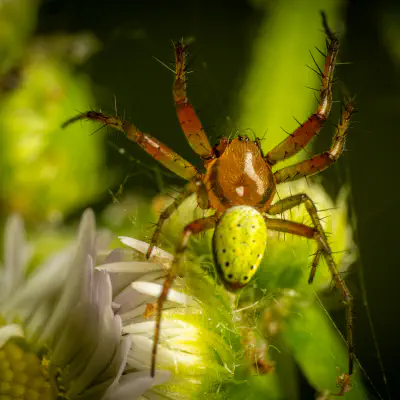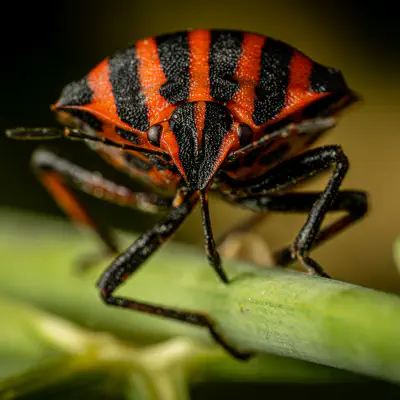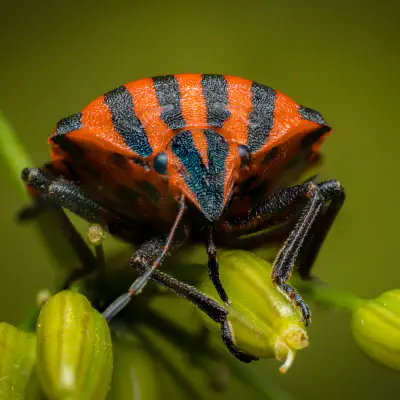G. italicum can reach a length of 8–12 mm (0.31–0.47 in). The body is almost round, with a large shield. The basic color of the upperside of the body is red, with wide black longitudinal stripes. The pronotum has six black bands. The antennae are black. Also the sides of the abdominal segments (connexivum) are red with many small black spots. The legs are mostly black, which distinguishes it from its relative, G. lineatum.
European Striped Shield Bug (lat. Graphosoma italicum)

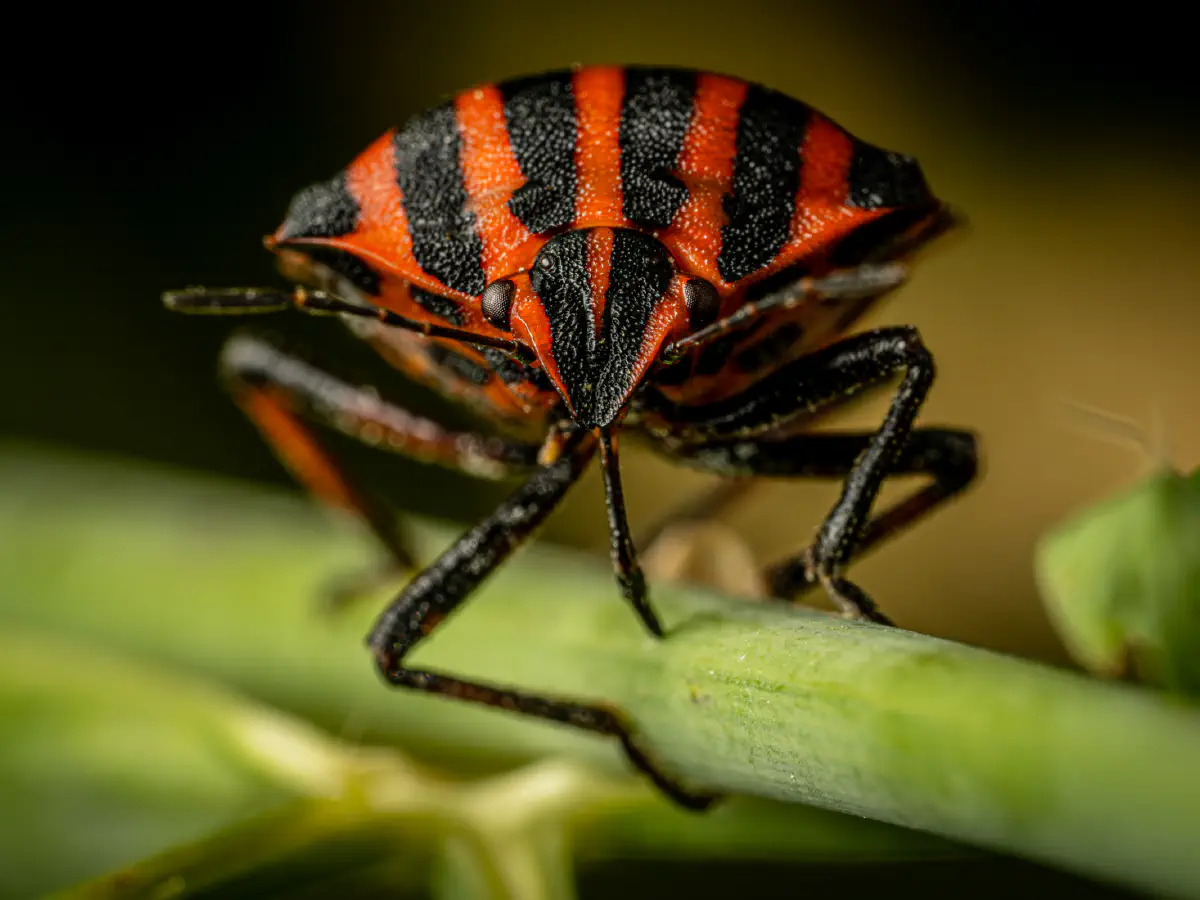
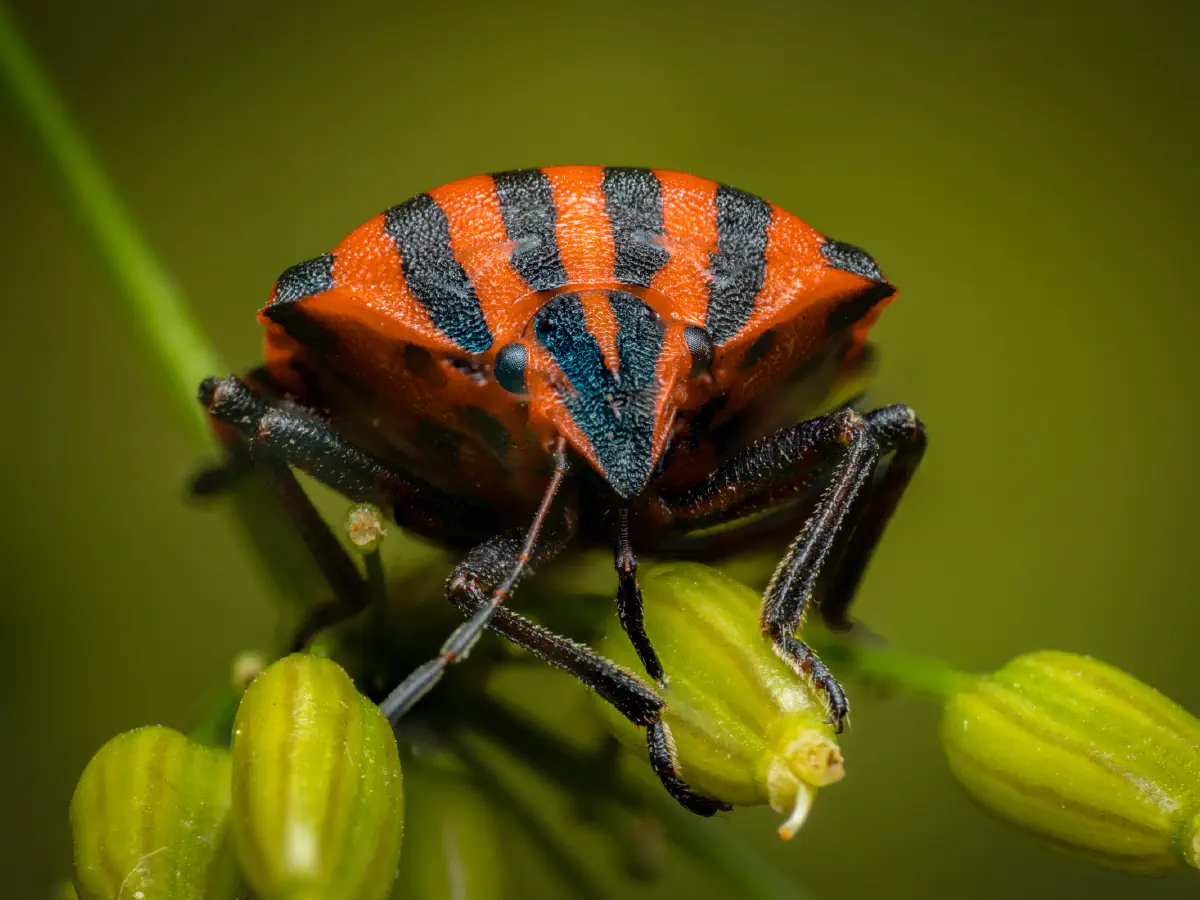
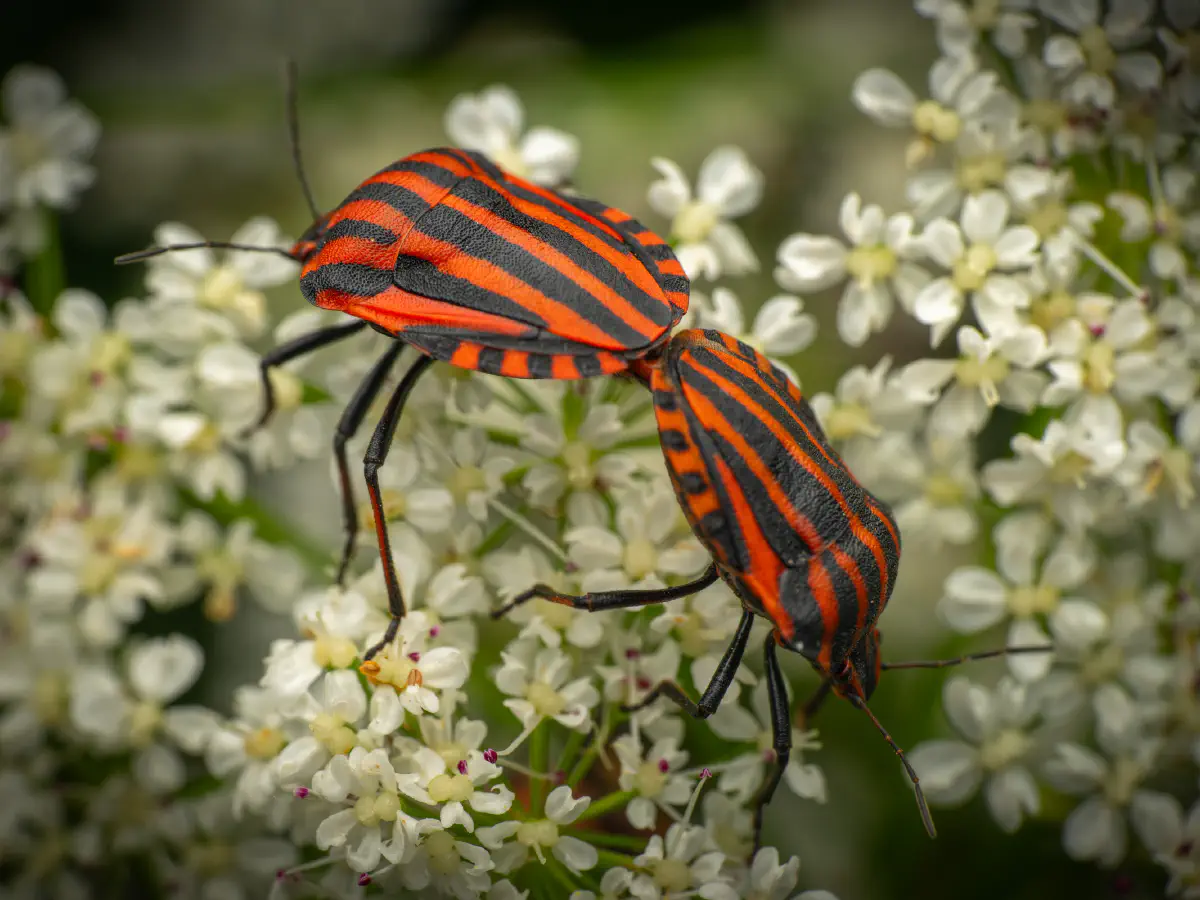
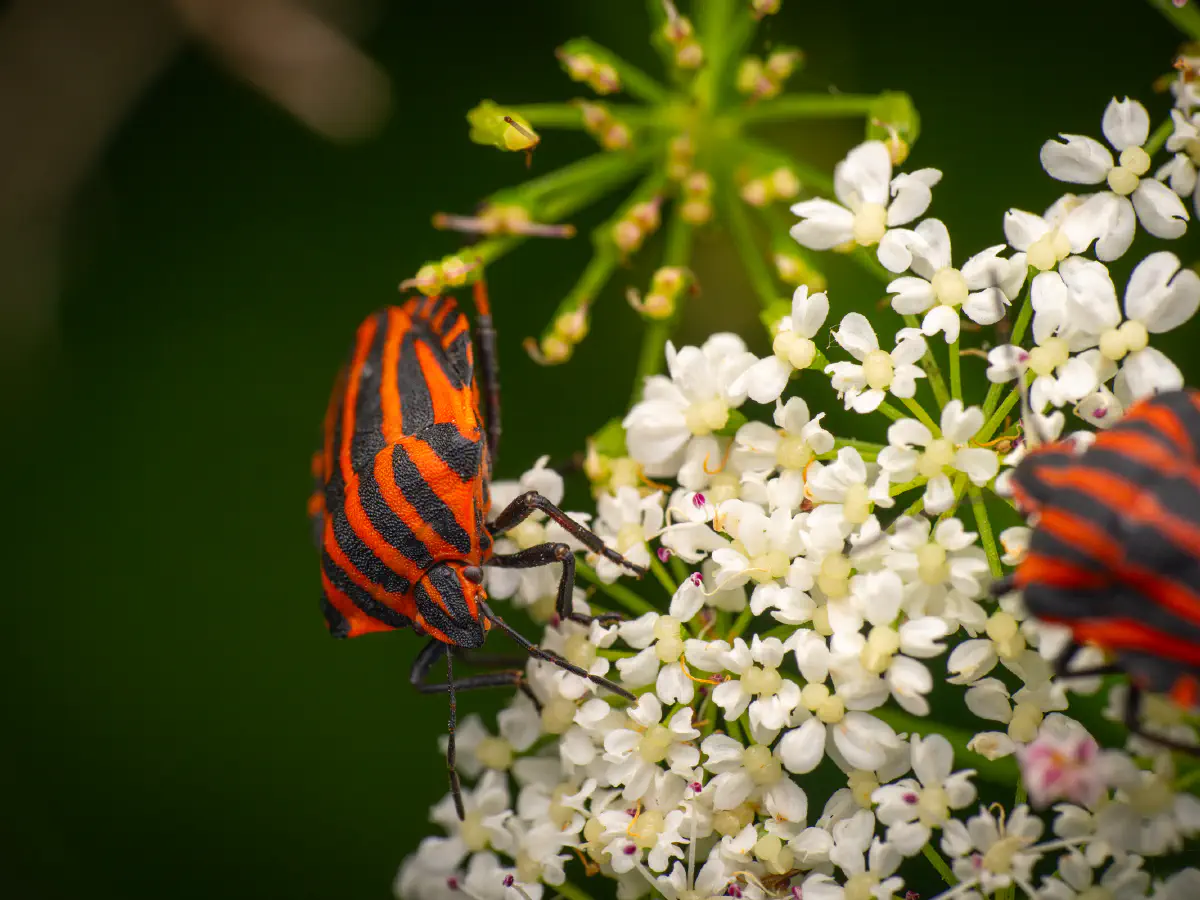
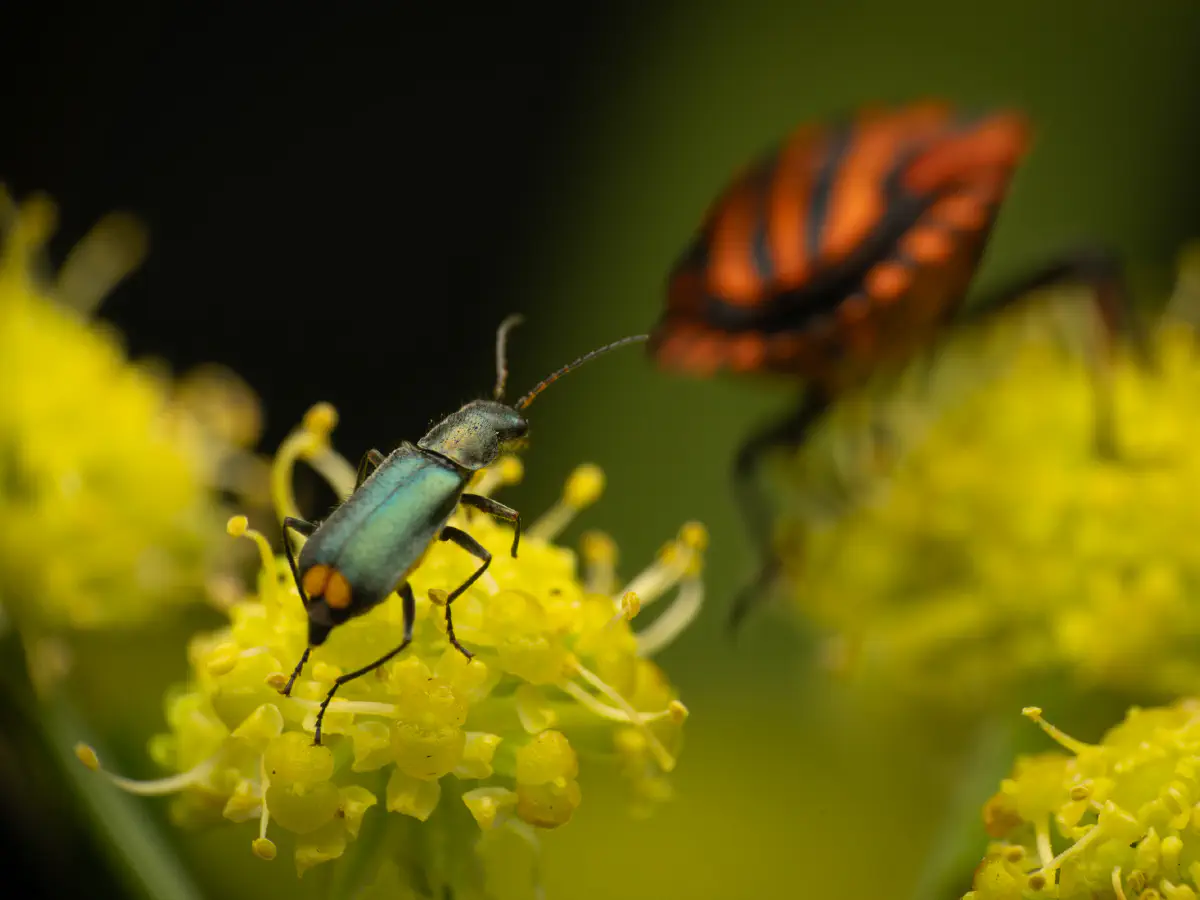
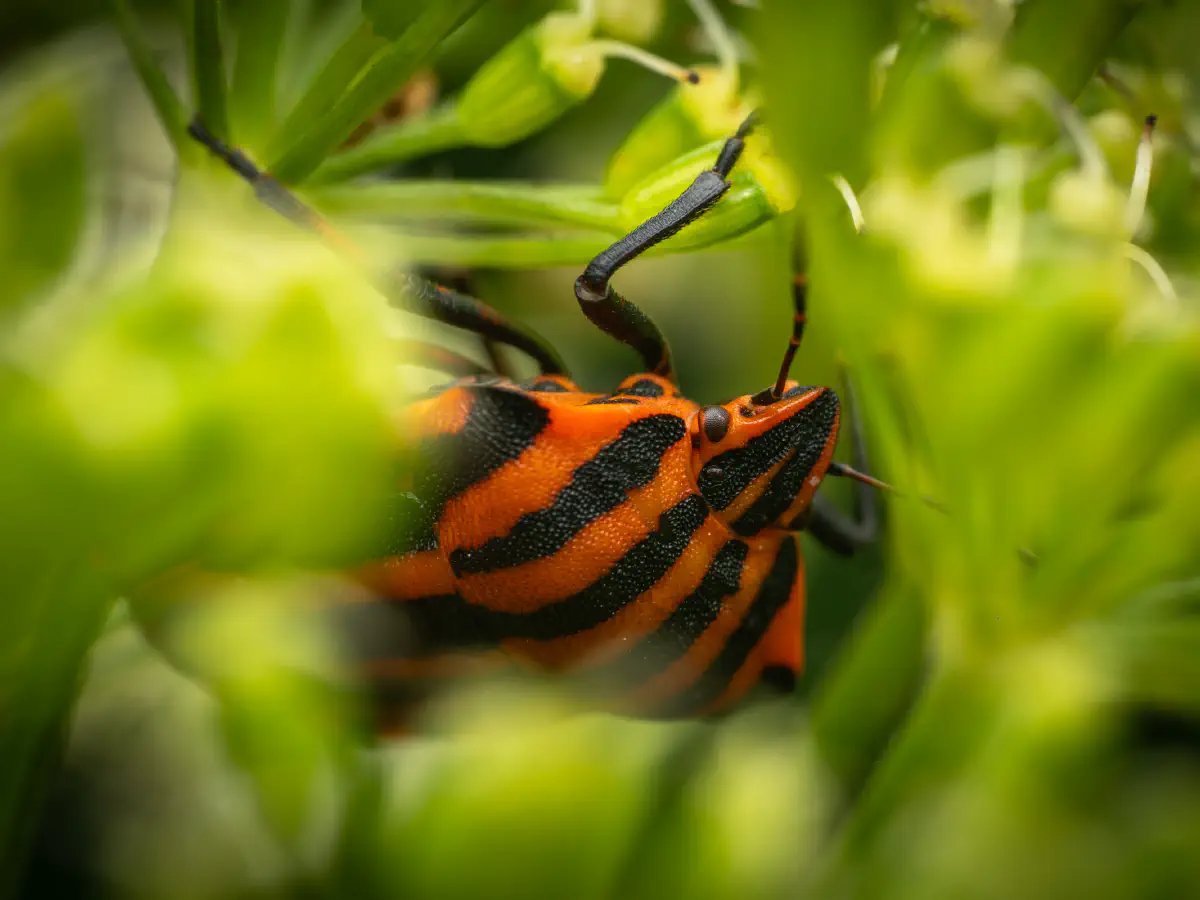

This is not intended to be a dry lexicon. Personal stories and sensitive articles form the framework for our pictures: „The spider’s vacation in an apartment“
Elio was looking for a quiet escape from the wild – but ended up caught in the middle of a whole new adventure.
